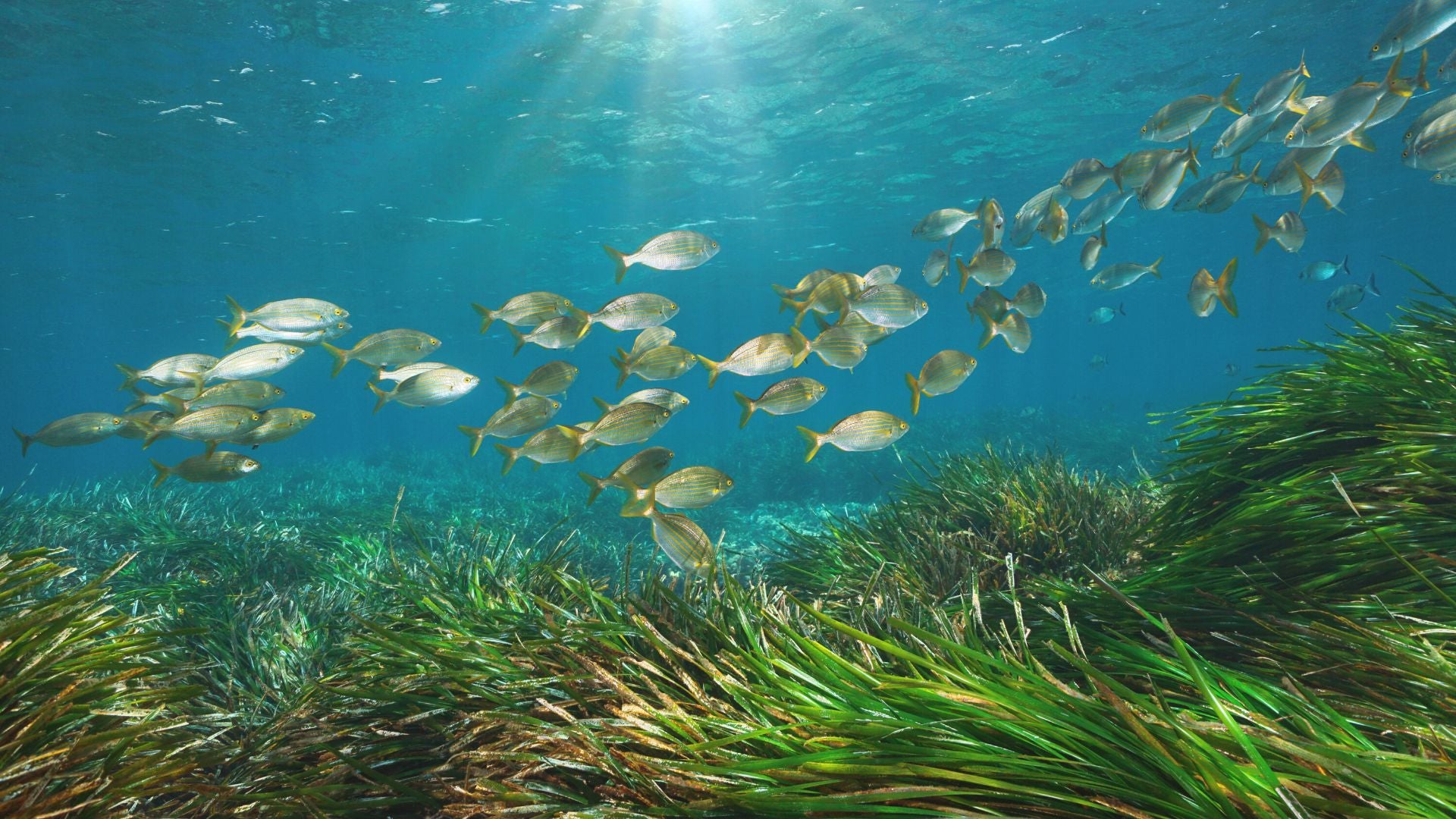
Seagrass is a bit more than just grass that lives in the sea.
Around since the Jurassic age of dinosaurs and deep sea cephalopods, it’s the only underwater flowering plant on the planet, and is often referred to as the “lungs of the sea” (much like how the Amazon Rainforest is called the “lungs of the earth”). Just one square metre of seagrass can exchange carbon dioxide for a whopping 10 litres of oxygen, making it an ally for marine animals and an ally against climate change.
These modest meadows of long, green leaves and buried root structures known as rhizomes, rely on light for photosynthesis, just like regular land plants. Because of this, they are commonly found growing in shallow, salty waters where they can see the sun, and are concentrated around most island coastlines and the tropical waters of the Indian and Pacific Ocean.
Seagrass’ role in the underwater ecosystem is vital and varied, from providing small sea creatures with protection from predators, to providing human beings with protection from wild weather.
Keep scrolling to learn the 5 main reasons why seagrass is so interesting and important…
1. It provides food & shelter
Did you know that a single acre of seagrass can support over 1 million different species?
Many fish and invertebrates feed on seagrass meadows, including seahorses, bottlenose dolphins, octopuses, grey nurse sharks, manatees, starfish, cuttlefish, parrotfish, leafy sea dragons, shrimp, prawns, sea cucumbers and crabs.
They are also a source of nutrients for marine herbivores. A dugong’s diet is almost exclusively made up of seagrass, with an adult being able to eat up to 40 kgs a day. An adult green turtle is partial to seagrass, and will eat around 2 kgs a day. Both creatures are unfortunately on the endangered list, so you can see just how important seagrass is to their survival.
Seagrasses also provide refuge and a nursery for many varieties of juvenile fish. Without them to hide out in or camouflage against, these young are extremely exposed and vulnerable to predators prowling the open oceans and reefs.
2. It improves water quality
Next time you’re scuba diving and enjoying the incredible, unimpeded views of schools of multi-coloured fish, sting-rays and reef sharks, be sure to tip your snorkel at some seagrass as you swim by, because you have them to thank for it.
Crystal clear underwater visibility is all down to the way seagrasses slow down and filter the flow of water. Their roots capture sand, dirt and silt particles in the ocean. Trapping these types of deep sea debris helps to improve overall water quality and clarity.
Furthermore, run-off and soil nutrients from the mainland get sucked up too, and are slowly released through their leaves as extra nourishment.

3. It captures carbon
As previously mentioned, the Amazon Rainforest is a living, breathing carbon mitigating machine. However, the role seagrass can play in our fight against climate change has been grossly underestimated - especially considering it can absorb and store CO2 from the atmosphere 35x faster than the famous forest.
Each square metre of seagrass is capable of capturing approx. 28 million tons of carbon per year, which accounts for more than 10% of the ocean’s overall carbon storage. As it only covers around 0.1 - 0.2% of the entire ocean floor, that’s an impressive stat!
So, how does it do it? Well, the carbon is stored in the seagrass, and when it dies, the leaves sink to the seafloor and decay. The carbon trapped inside the leaves will become buried by sediment, and voilà, gone forever (or until the seagrass is interfered with).
This is known as a “blue carbon” ecosystem and is another great tool in our lower greenhouse gas emissions arsenal.
4. It protects coastal communities
As global warming wreaks havoc on us, our weather conditions are becoming more and more extreme and unpredictable. As a result, floods, hurricanes and storm surges are becoming more and more prevalent around the world, with devastating effects on the coast and people that live and holiday there.
This is where a solid supply of seagrass can help minimise the damage.
Its extensive root system stabilises the sediment on the seafloor (much like how land grasses stop soil erosion) and can reduce the intensity of wave energy and currents triggered by a swell. This means that residential homes and businesses that are situated nearby will be safer and dryer than they would otherwise be if they didn’t have a seagrass buffer zone.
5. It sustains people & the economy
Two of the most important things for humans - healthy food and healthy finances - can be helped by seagrass too.
They’ve been capitalised upon for over 10,000 years and used in many different ways and for many different things. They’ve been used as housing insulation and for thatched roofs, to fertilise fields, to weave baskets and items of furniture like chairs, poufs and ottomans, to fill mattresses in lieu of feathers, wool or cotton, to make equestrian saddle pads, bandages, car seats and more.
Millions of people in the Indo-Pacific region, such as Indonesia, Cambodia and Sri Lanka, rely on seagrass meadows to provide food for their families and an income stream from working in local family-run or commercial fishing industries.
Often, it’s the preferred area to fish in, instead of in coral reefs and mangroves, as many different varieties of fish and invertebrate tend to congregate there in large numbers. It’s also a softer and safer spot to fish either on foot or in a boat.

Comments (0)
Back to Blog